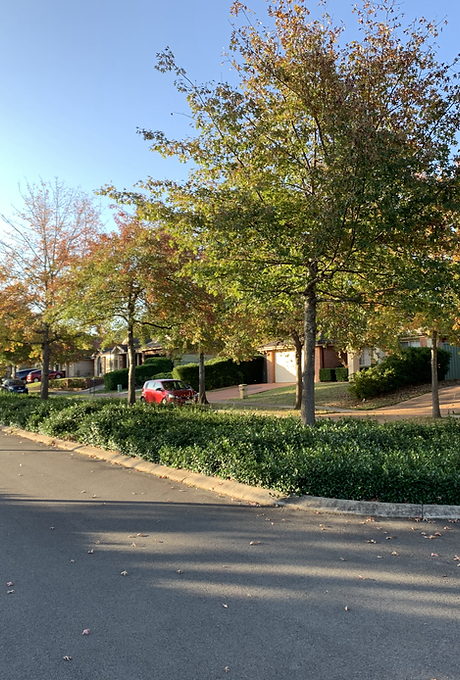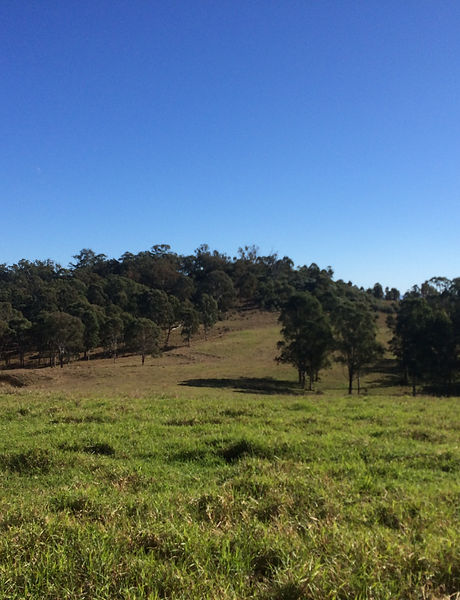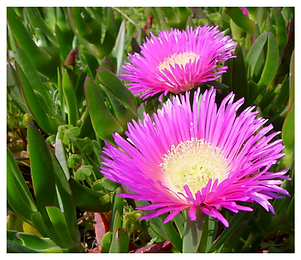RECENT PROJECTS
Green Infrastructure
Since EConPlan began in 2016, we’ve provided our services to a variety of public sector clients. On every project we undertake, our most important objective is to relate with clients and understand their core necessities and goals in order to deliver high quality outcomes. Below are some examples of the work we’ve done.

GREEN GRID IMPLEMENTATION STUDY 2020
Liverpool Council
EConPlan collaborated with McGregor Coxall to identify strategic Green Grid projects to guide Council's decision making for future open space investments. The Study provided a strategic direction and a suite of projects, selected and prioritised using a robust technical method informed by comprehensive mapping layers prepared by McGregor Coxal . These layers included urban heat, biodiversity, transport networks, areas requiring improved walkability, community accessability, urban canopy cover, waterways, and urban ecology links in the context of a dynamic Local Government Area undergoing urban renewal in some areas, with urban release areas and agricultural areas further to the west. EConPlan identified potential tools in the Local Environmental Plan to implement the green grid.
KU RING GAI SHOWGROUND AND PRECINCT LANDS PLAN OF MANAGEMENT
Ku Ring Gai Council
EConPlan worked with Otium Planning and sub-consultants to deliver a comprehensive plan of management for this iconic site. EConPlan's input focussed on preserving and enhancing natural and cultural values which include high value lands that required a sensitive and scientific approach to land management and stakeholder and community collaboration.


PLANS OF MANAGEMENT FOR CROWN LANDS
Hunters Hill Council
EConPlan joined CGM Planning and Environmental Partnership to prepare plans of management for parks and natural areas managed under the Crown Lands Management Act 2016. EConPlan prepared the natural area and heritage components of the plans based on the latest best practice, policy and data.
PROJECTS

WOLLONDILLY URBAN CANOPY PLAN AND BACKGROUND AND ANALYSIS REPORT FOR WOLLONDILLY SHIRE COUNCIL
EConPlan collaborated with McGregor Coxall in 2020 to prepare the Wollondilly Urban Canopy Plan and Landscape Strategy. The project investigated the opportunities and constraints in relation to the physical environment and legislative and policy context. The Canopy Plan established urban tree canopy targets for Wollondilly's existing and future urban development areas and identified opportunities to strengthen local planning policies and other instruments for effective implementation. The Plan included actions that addressed the heritage landscape, biodiversity and koala corridors, urban heat, fire management, the Green Grid and community collaboration.
MASTERPLAN FOR EASTWOOD TO MACQUARIE PARK OPEN SPACE CORRIDORS
EConPlan was commissioned by McGregor Coxall in 2020 as a sub-consultant to advise on the biodiversity and bushfire components of the project. The masterplan included three green corridors along Terry's Creek, Shrimpton's Creek and along Woorang Green Link. EConPlan identified the biodiversity objectives, the ecological values and devided recommendations to maximise biodiversity and ecological outcomes to address in the masterplanning process.


CULTURAL AND ENVIRONMENTAL EDUCATION CENTRE, ST IVES SHOWGROUND
EConPlan was commissioned by CHROFI Architects in 2020 to prepare a Review of Environmental Factors for a cultural environmental education centre at the St Ives Showground. CHROFI designed the innovative structure which aims to blend into the environment with rammed earth components and incorporate the latest sustainability measures. (Image by CHROFI Architects)
RECENT PROJECTS

STRATEGIC PLANNING FRAMEWORK 2017-2036
Botanic Gardens and Centennial Parklands - Australian Botanic Garden, Mount Annan, NSW
EConPlan and Tract Consultants worked together to create a strategic planning framework for the Australian Botanic Garden at Mount Annan. The 416 hectare garden was established in 1988 and is the largest in Australia. It is located in south-west Sydney, one of the fastest growing regions in the country, where demographic changes are influencing visitor expectations and needs. The project involved identifying a vision, the significant values to be preserved and enhanced, land use planning objectives, key development principles, strategic direction, demographic forecasts, visitation demands, recreation needs, opportunities and constraints, precinct vision and objectives as well as an implementation plan.
DRAFT GREENER PLACES DESIGN GUIDE - BUSHLAND AND WATERWAYS: GREEN INFRASTRUCTURE FOR HABITAT AND ECOLOGICAL HEALTH TO ACCOMPANY THE GREENER PLACES URBAN GREEN INFRASTRUCTURE POLICY FOR NSW
NSW Government Architect
EConPlan was commissioned by the NSW Government Architect to assist in drafting the Bushland and Waterways section of the Draft Greener Places Design Guide. The document that includes greening open space and streets will support implementation of the draft Greener Places policy which aims to develop green infrastructure as a network rather than separate elements. Greener Places builds on the Sydney Green-Grid, a Green Infrastructure strategy incorporated in the latest district plans and Metropolitan Plan that connect town centres, public transport networks and major residential areas in Sydney via a network of natural and semi natural systems, such as parks, bushland, rivers, gardens and street trees.


STRATEGIC PLANNING FOR GREEN INFRASTRUCTURE
City of Parramatta
EConPlan was commissioned by City of Parramatta to prepare a desk top analysis to identify opportunities to deliver green infrastructure on privately owned land in Council's future comprehensive LEP and DCP to comply with the Central City District Plan and implement Council's green infrastructure policies and strategies.
EConPlan also assisted in progressing Council's Urban Forest Strategy, Green Infrastructure Policy and Local Strategic Planning Statement in relation to green infrastructure.
INTEGRATED PLANNING FOR LANDSCAPE
Office of Environment and Heritage
EConPlan was invited to present to the June 2019 Integrated Planning for Better Places and Environmental Outcomes Workshop for councils in the Sydney metropolitan area. The presentation covered how councils can plan in the landscape when preparing local strategic planning statements, local environmental plans, development control plans and related strategy and policy documents. Topics covered included planning with Country, soils and geology, hydrology, urban habitat and ecology, urban canopy and urban heat, using OEH maps and best practice examples.

ENVIRONMENTAL IMPACT ASSESSMENT
Western Sydney Parklands Trust and Parramatta Park Trust
EConPlan was commissioned by the Western Sydney Parklands Trust and the Parramatta Park Trust in 2018 to prepare a review of environmental factors template for each Trust to ensure efficiencies, consistency and cost savings in the environmental assessment process for recreational capital works projects and minor activities.
EConPlan was commissioned in 2020 to update the template for Parramatta Park based on recent legislative changes and the adoption of the new Plan of Management and Conservation Management Plan for Parramatta Park. EConPlan was also commissioned to prepare guidelines for Visual Impact Assessment in Parramatta Park and a self-assessment checklist for minor works to better understand when external approvals or permits are required under the National Parks and Wildlife Regulations 2019 and the Heritage Act 1977.



PARRAMATTA PARK TRUST
Review of Environmental Factors for Old Kings Oval
EConPlan was commissioned by Parramatta Park Trust to prepare a review of environmental factors for the installation of night lighting, an irrigation line and electronic scoreboard for Old Kings Oval which is a district level sporting facility. Parramatta Park contains rich and unique cultural and natural heritage which is recognised on local, state, national and World Heritage lists. The main constraints of the proposal which were manageable included Aboriginal heritage, historic heritage and small areas of contaminated soil.

BUSHLAND REHABILITATION PLANS
North Sydney Council
EConPlan was commissioned by North Sydney Council to prepare reserve rehabilitation plans for its bushland reserves to guide future management for the next ten years. The twelve plans were designed to be compact and user friendly, providing information on physical characteristics and significance, plant communities, wildlife habitat condition and resilience, burn history, facilities and infrastructure, threats, bushland management goals, rehabilitation principles and procedures and site specific rehabilitation actions.
Note: EConPlan has also undertaken surveys of Acacia terminalis terminals for OEH as part of the Saving Our Species Program in North Sydney LGA
PLANS OF MANAGEMENT
NSW National Parks and Wildlife Service

WILLIAM HOWE REGIONAL PARK PLAN OF MANAGEMENT – NARELLAN VALE
Consultation was undertaken with key stakeholders including Camden Council, Sydney Water, the Local Aboriginal Land Council and the Australian Botanic Gardens. Management directions and responses were developed to protect the landscape, biodiversity, Aboriginal and European heritage and recreation values of the park to service the rapidly growing population of South West Sydney.
LEACOCK REGIONAL PARK PLAN OF MANAGEMENT – CASULA, NSW
The plan was prepared to ensure the conservation of natural and cultural assets, recognise and protect traditional and contemporary Aboriginal connections, promote and facilitate the Park as a short stay destination and thoroughfare for regional cycle and walking routes. The plan also encouraged collaboration with local government agencies, commercial interests and the community to maximise interest and involvement.


BENTS BASIN STATE CONSERVATION AREA AND GULGUER NATURE RESERVE STATEMENT OF MANAGEMENT INTENT AND DRAFT PLAN OF MANAGEMENT – WALLACIA, NSW
Prepared a draft plan of management and a final statement of management intent for Bents Basin State Conservation Area and Gulguer Nature Reserve that adjoin each other at the foot of the Blue Mountains in south west Sydney. A key component of the project was to provide sustainable well designed and maintained facilities and services within Bents Basin to attract visitors and meet the demands of the expanding population of Western Sydney whilst conserving the reserves’ values.

PARRAMATTA RIVER REGIONAL PARK BEDLAM BAY PLAN OF MANAGEMENT - GLADESVILLE, NSW
This regional park in Gladesville contained significant historic values including the first section of the convict built Great North Road and the cultural landscape of the Gladesville Hospital site as well as a regional walking corridor, Aboriginal sites, jetty, oval and bushland remnants. Management principles were developed that aimed to preserve and promote key elements as well as explore options for future leasing of the park for increased recreation and sporting activities, promotion of visitor and community site appreciation and participation in conservation.
MT GRENFELL HISTORIC SITE PLAN OF MANAGEMENT - COBAR, NSW
Commissioned by the NPWS to work on the latter stages of the preparation of this plan which included liaison with the Board of Management and finalisation of the text and presentation. The specific management direction for the park related to recognising, protecting and promoting its many and diverse values and supporting Ngiyampaa Wangaaypuwan in reconnecting with Country and culture through cultural activities and involvement in managing the historic site.


OTHER PROJECTS - LAND CAPABILITY ANALYSIS
Commissioned by the landowners to prepare an environmental capability analysis for 212 hectares abutting the South West Growth Centre in south west Sydney. This comprised identifying the features that make up the existing environment and determining urban capability to inform a planning proposal and indicative layout plan.
EDIBLE NATIVE PLANTS
EConPlan was recently engaged by a large supermarket chain in Sydney to scope the potential to sell native foods, medicines and skin products to: promote the natural environment and sustainable and resilient native food sources; educate clients about indigenous products; facilitate a deeper appreciation; support indigenous enterprises; and make indigenous food more mainstream. Advice incorporated a summary of the indigenous food industry, ethics issues regarding cultural and natural values, major industry organisations, associations and groups and partnership potential. Each product was reviewed in relation to origin, sustainability, taste, uses, history, form sold, market availability, nutrition and health benefits.

DIANELLA

KARKALA


